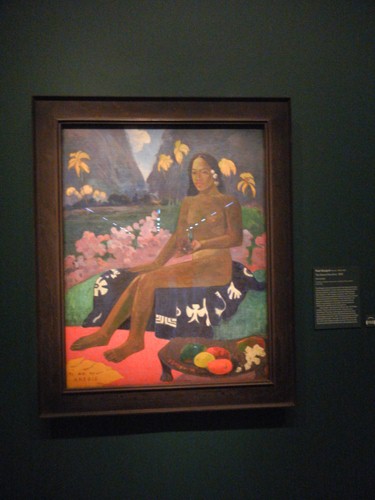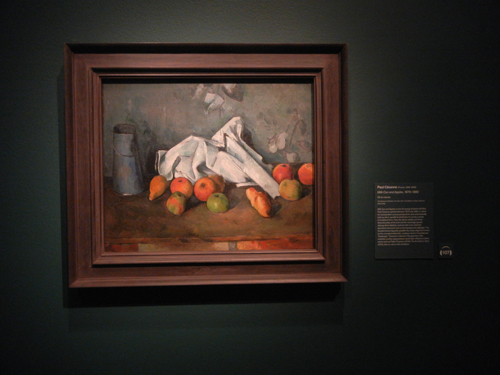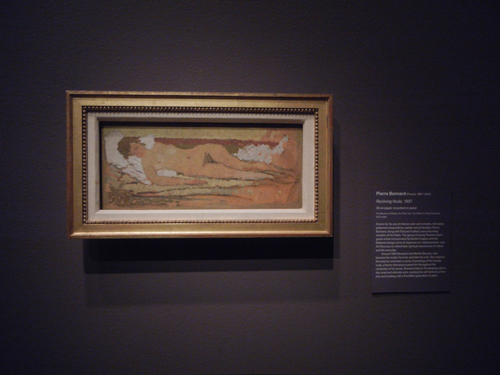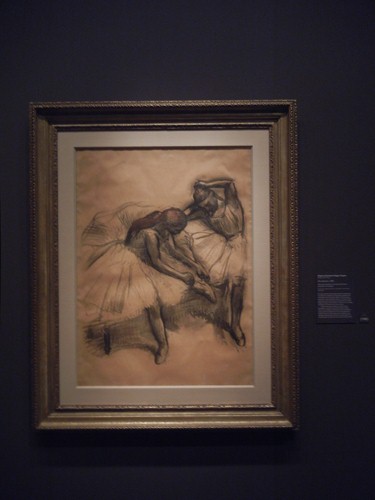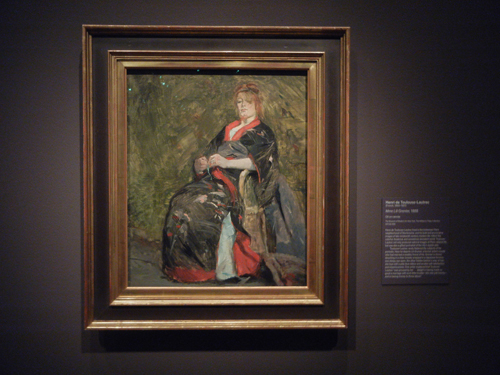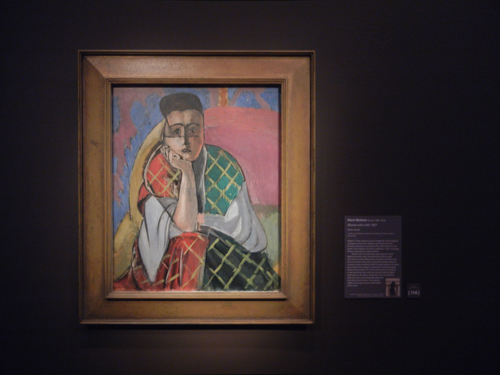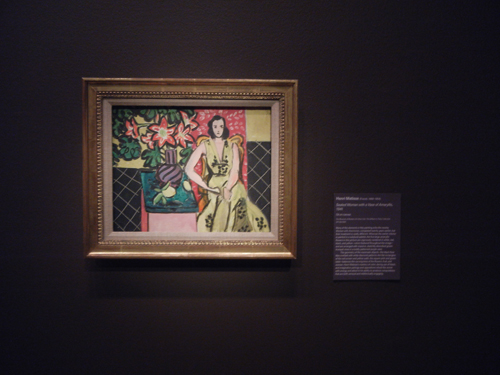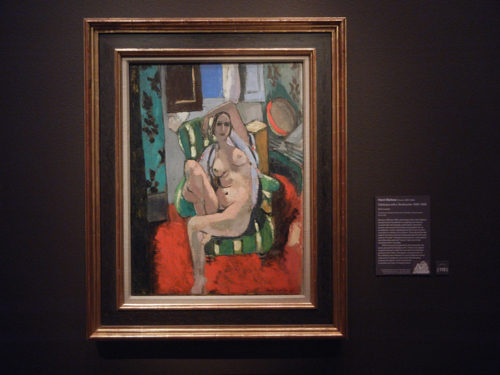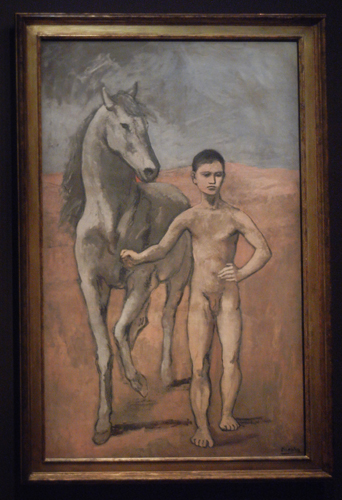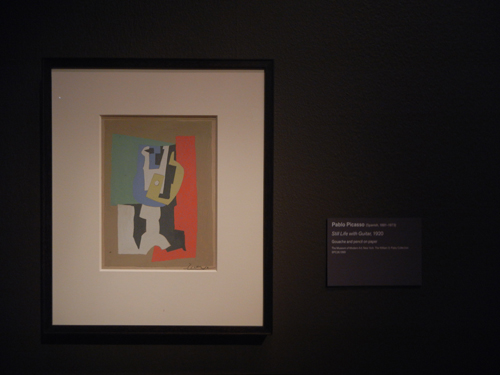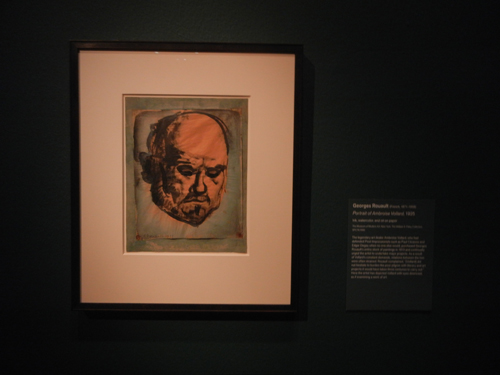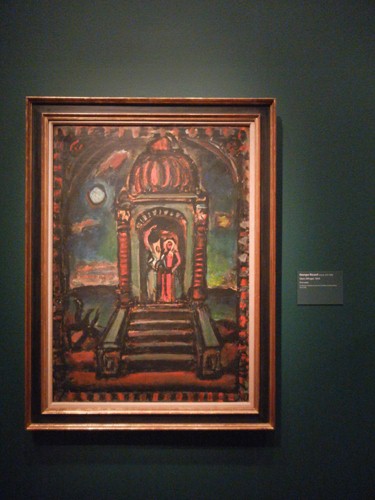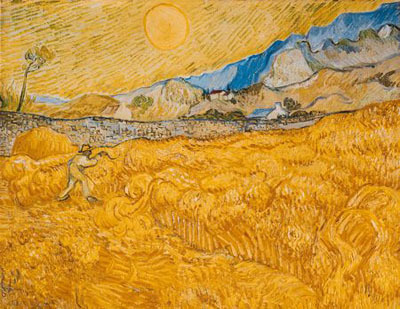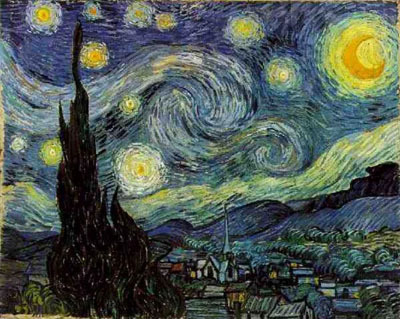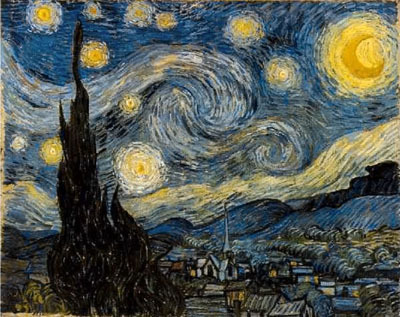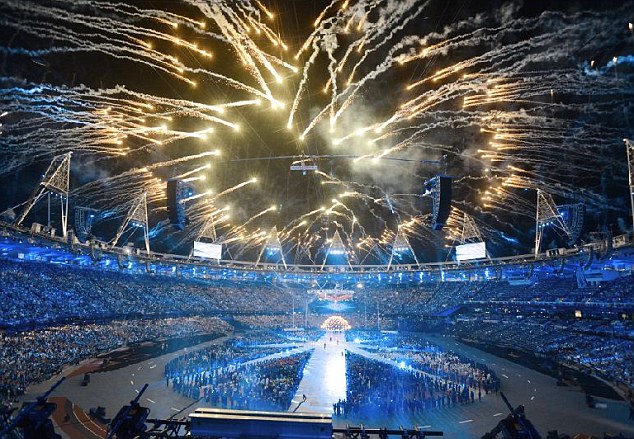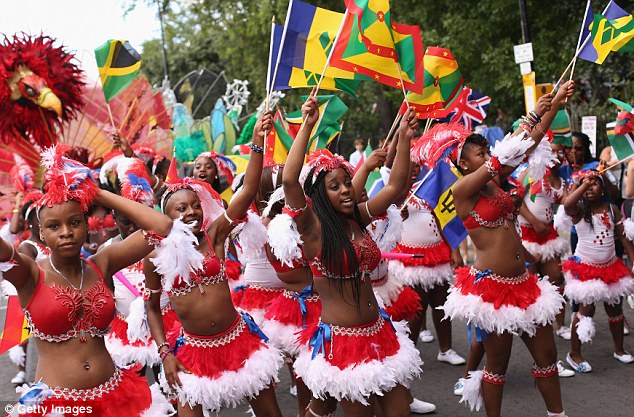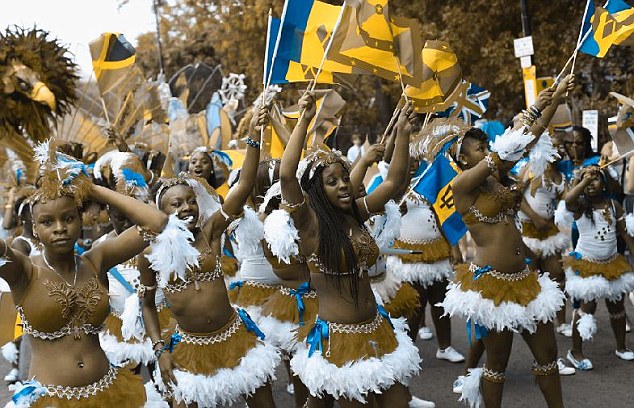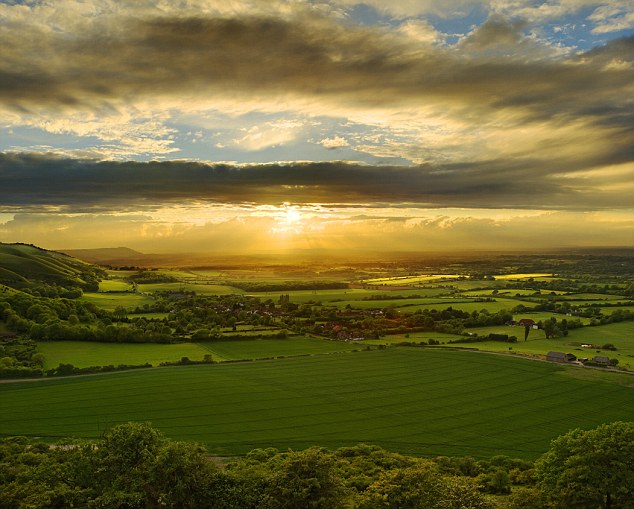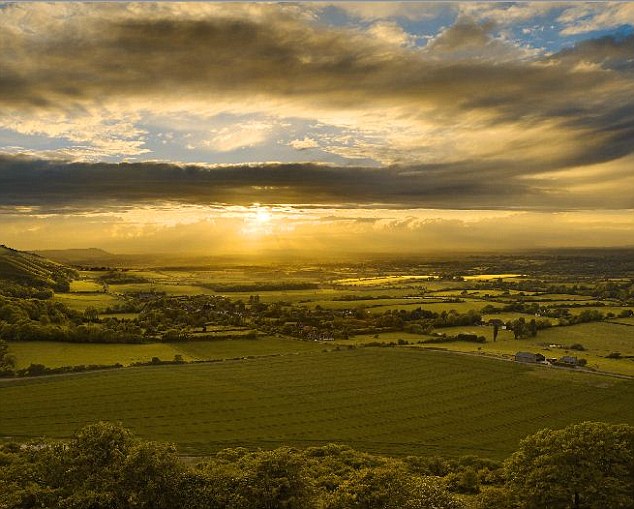Though I have always been drawn to Northern and Central European artists, such as those from Germany and Netherlands, before my recent trip to Vienna, Austrian artists, beside
Oska Kokoschka, hadn't made much impression on me, though I was not aware of other leading figures, such as
Gustav Klimt (1862-1918) and
Egon Schiele (1890-1918).
Of these two, I was more familiar with Klimt, largely due to the broadly-reported lawsuit over his painting,
Adele Bloch-Bauer I, which eventually was transferred from Belvedere, Austria to the heir to its original Jewish owner, then was sold to
Neue Galerie, New York, and there I saw the painting in 2010, along with Klimt's
Bildnes Baronin Elisabeth Bachofen-Echt (Portrait of Baroness Elisabeth Bachofen-Echt). During the same trip, in
New York MOMA, I also saw Klimt's Hope, II. Egon Schiele was fuzzier to me.
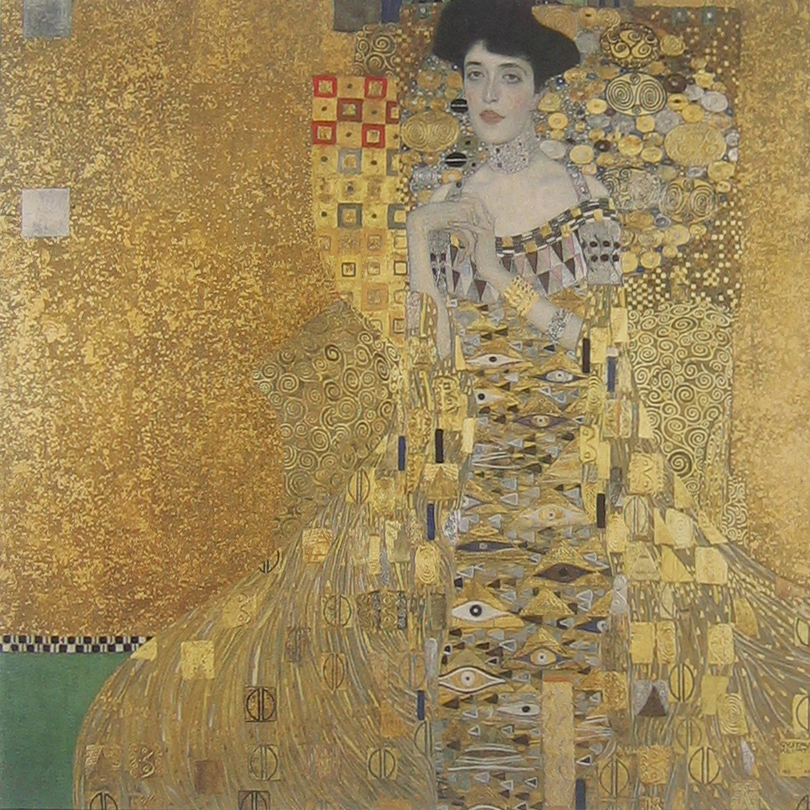 Adele Bloch-Bauer I, Gustav Klimt, 1907, Neue Galerie New York
Adele Bloch-Bauer I, Gustav Klimt, 1907, Neue Galerie New York
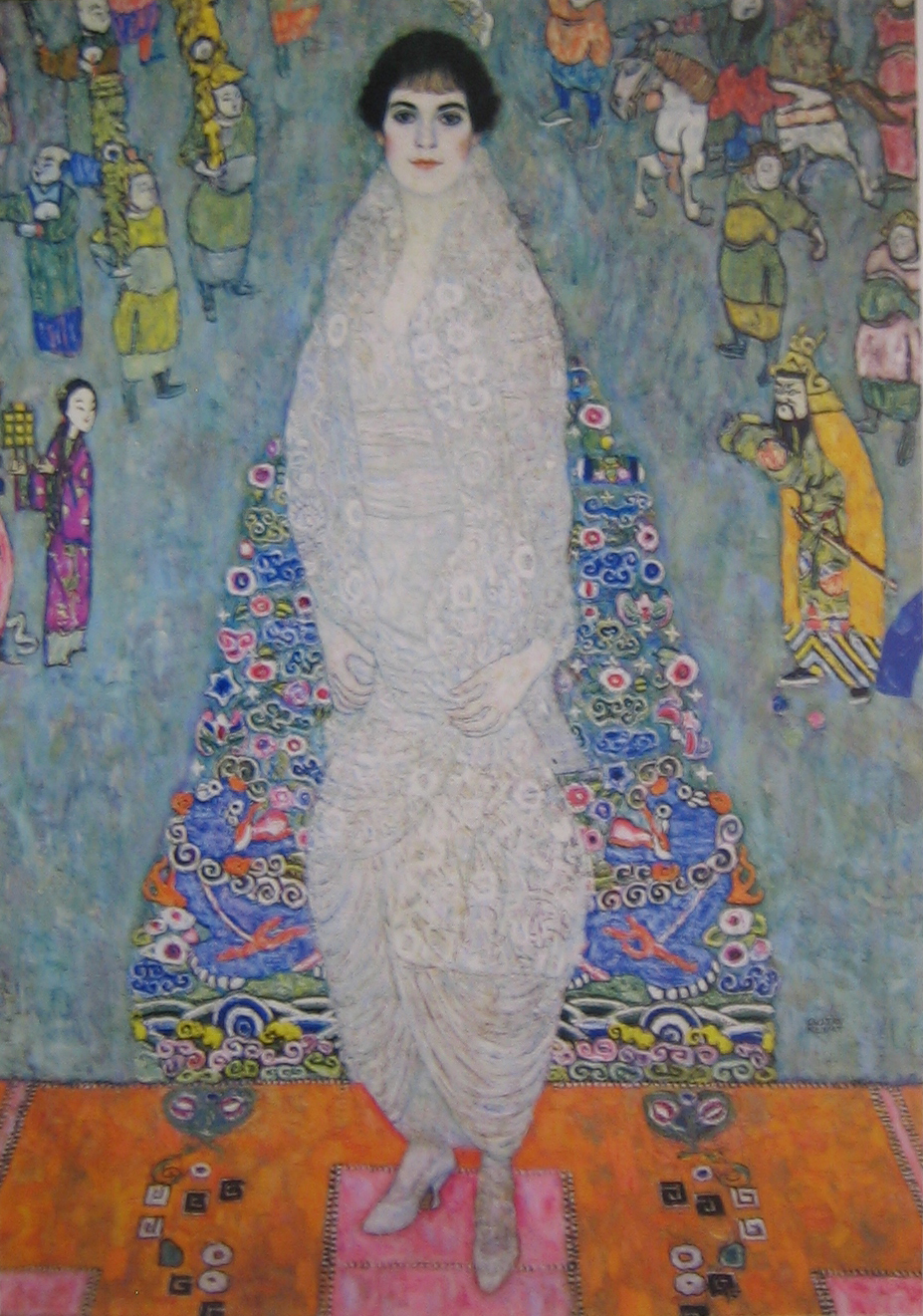 Bildnes Baronin Elisabeth Bachofen-Echt (Portrait of Baroness Elisabeth Bachofen-Echt), Gustav Klimt, c. 1914, Neue Galerie New York
Bildnes Baronin Elisabeth Bachofen-Echt (Portrait of Baroness Elisabeth Bachofen-Echt), Gustav Klimt, c. 1914, Neue Galerie New York
 Hope, II, 1907-08, Gustav Klimt, Museum of Modern Art (MOMA), New York City
Hope, II, 1907-08, Gustav Klimt, Museum of Modern Art (MOMA), New York City
In October, I re-visited Vienna, Austria, where the 150th anniversary of Gustav Klimt was being celebrated by practically every important art museum, therefore my survey of his oeuvre became more comprehensive and I had much better understanding of Klimt.
In the meanwhile, the new museums I visited during that second trip to Vienna, mostly concentrating on Austrian art, brought me to the presence of another great Austrian artist, Egon Schiele and he instantaneously became one of my favorite artists.
Both Klimt and Schiele represented perfectly their time and place, with the older Klimt, the epitome of eroticism and decadence, the excess of fin de siècle, thoroughly bourgeois, and the younger Schiele, the comprehensive fear of the end of the century and the clear and present doom to come, despite his occasional Tiffany lamp styled, innocent enough landscapes and townscapes.
Since Klimt was the of the founding members and president of the
Wiener Sezession (
Vienna Secession) in 1897, it is fitting to start my discussion from a trip to
Secession Building (
Wiener Secessionsgebäude).
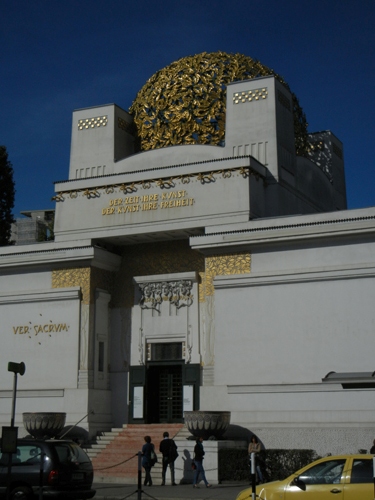 Secession (Wiener Secessionsgebäude), Wien
Secession (Wiener Secessionsgebäude), Wien
The center piece of Klimt celebration in this rather modest museum was the
Beethoven Frieze, loaned from Upper Belvedere, after Richard Wagner's interpretation of Ludwig van Beethoven's Ninth Symphony, with an overall length of 34.14 m (long walls 13.92 m each, front wall 6.30 m), and height of 2.15
- 2.00 m. There was a fascinating video of the restoration process of this rather delicate, and "temporary" work. There was a replica of a section of it for viewers to exam very closely. For the real thing, one could see it in reasonably close range, on raised platform, mounted on top of a specially built room to its specific dimensions, covering all four sides of the wall. The dominant theme was love or lust and the overwhelming color was gold. This series was heavy with symbols yet I felt it was a bit underwhelmed, despite its visual dazzle.
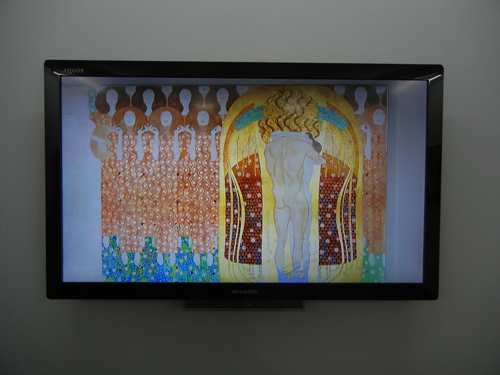 Beethoven Frieze restoration video, Secession, Wien
Beethoven Frieze restoration video, Secession, Wien
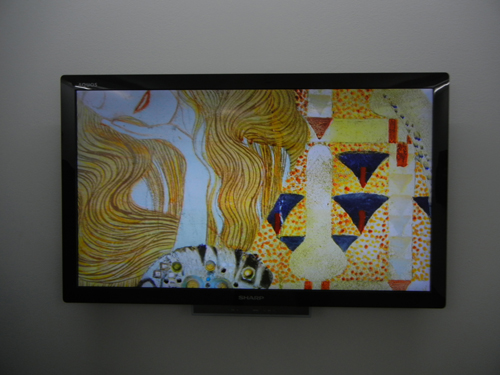 Beethoven Frieze restoration video, Secession, Wien
Beethoven Frieze restoration video, Secession, Wien
 Beethoven Frieze copy, Secession, Wien
Beethoven Frieze copy, Secession, Wien
For more permanent murals by Klimt, one should go to Burgtheater and Kunsthistorisches Museum. I did spent a night at Burgtheater for a play by Herinch von Kleist -
Der Prinz von Homburg, but we missed the entrance to the grand staircase adored with Klimt's murals before the show and it was closed afterward. No intermission to exploit. We were able, however, to see some of his drawings on the wall, just outside the auditorium. Without the glittery colors he loved to employ, one could appreciate more of his draftsmanship but they didn't have the hallmarks of a Klimt and definitely was not as satisfying.
 Burgtheater, Wien
Burgtheater, Wien
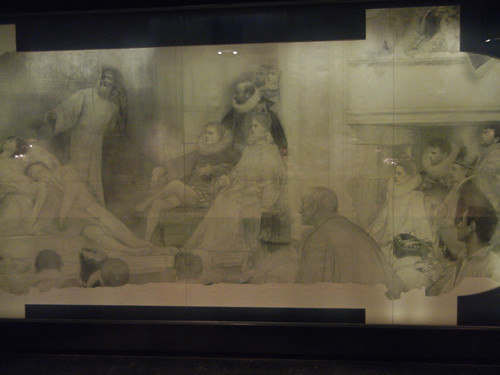 Klimt Drawing, Burgtheater, Wien
Klimt Drawing, Burgtheater, Wien
The great art museum Kunsthistorisches Museum in Vienna celebrated Klimt with another raised platform, granting viewers a close look to Klimt murals dressed in their most splendid colors. The theme was aptly called "Face to Face with Gustav Klimt". His figures, confined in the niches, were quite like late medieval to early Renaissance paintings, stylized, otherworldly and absolutely enchanting. They bore less obvious hallmark of Klimt we generally attributed to him - free-flowing sumptuousness. Here, they were tightly controlled. Very classical.
 Kunsthistorisches Museum, Wien
Kunsthistorisches Museum, Wien
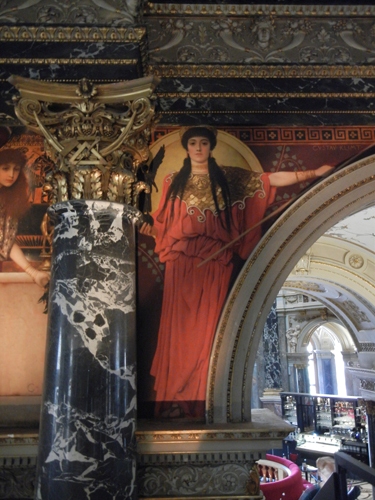 Face to Face with Gustav Klimt, Kunsthistorisches Museum, Wien
Face to Face with Gustav Klimt, Kunsthistorisches Museum, Wien
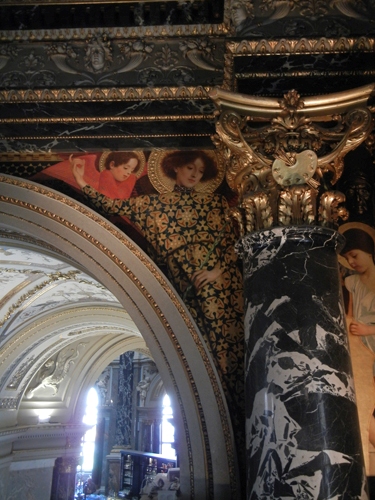 Face to Face with Gustav Klimt, Kunsthistorisches Museum, Wien
Face to Face with Gustav Klimt, Kunsthistorisches Museum, Wien
Klimt's more signature paintings could be seen in two museums specializing in Austrian arts:
Oberes Belvedere (Upper Belvedere) and
Leopold Museum. These two museums, particularly Leopold, also boasted a stunning collection of Egon Schiele.
 Oberes Belvedere and Fountain, Wien
Oberes Belvedere and Fountain, Wien
 Oberes Belvedere and Fountain, Wien
Oberes Belvedere and Fountain, Wien
Klimt's paintings in Oberes Belvedere bore all the familiar traits of his; even his landscape had an unfettered sensuality, which was the hallmark of its epoch of self-expression and self-indulgence, of Freud.
 Allee im Park vor Schloß Kammer, Gustav Klimt, um 1902, Oberes Belvedere, Wien
Allee im Park vor Schloß Kammer, Gustav Klimt, um 1902, Oberes Belvedere, Wien
His figure, particularly those female nudes, such as Eve (Eva) and Judith below, seemed live in the time and space utterly outside the domain implied by their respective titles. They were confident, seductive and overtly sensual. The juxtaposition of endless arrays of colors and patterns were dazzling. However, the overwhelming compote induced a sensation verging at nauseating.
 Adam und Eve, Gustav Klimt, 1917-18, Oberes Belvedere, Wien
Adam und Eve, Gustav Klimt, 1917-18, Oberes Belvedere, Wien
 Braut, Gustav Klimt, 1918, Oberes Belvedere, Wien
Braut, Gustav Klimt, 1918, Oberes Belvedere, Wien

Judith, Gustav Klimt,
1901,
Oberes Belvedere, Wien |
|

Wasserschlangen, Gustav Klimt,
1904-07,
Oberes Belvedere, Wien (public domain) |
|
|
 Kuss, Gustav Klimt, 1907-08, Oberes Belvedere, Wien
Kuss, Gustav Klimt, 1907-08, Oberes Belvedere, Wien
After Klimt, the symbol of sumptuousness and sensuality of Fin de siècle and Viennese Secession, Egon Schiele's paintings of expressionism school, collected by the same Oberes Belvedere, Wien, were nitty-gritty reality, viewed through a personal lens, with a man whose creative height coincided with the brutal World War I. Even his quite becalming landscapes and townscapes had an unsettled feeling, and later in years, such as his 1917
Vier Bäume, a color scheme reminding viewers of bloodshed, despite and because of its undeniably beauty and certain nauseatingly sweetness.
 Fensterwand (Hauswand), Egon Schiele, 1914, Oberes Belvedere, Wien
Fensterwand (Hauswand), Egon Schiele, 1914, Oberes Belvedere, Wien
 Vier Bäume, Egon Schiele, 1917, Oberes Belvedere, Wien
Vier Bäume, Egon Schiele, 1917, Oberes Belvedere, Wien
Move on to his figure paintings, one was flooded by the survey of resigned hopelessness, yearning desire for life and love in adversary, and utter despair. Here were the manifests of tragedy of human race.
 Mutter mit zwei Kindern III (Mutter III), Egon Schiele, 1915-17, Oberes Belvedere, Wien
Mutter mit zwei Kindern III (Mutter III), Egon Schiele, 1915-17, Oberes Belvedere, Wien
 Familie (Kauerndes Menschenpaar), Egon Schiele, 1918, Oberes Belvedere, Wien
Familie (Kauerndes Menschenpaar), Egon Schiele, 1918, Oberes Belvedere, Wien
 Tod und Mädchen, Egon Schiele, 1915, Oberes Belvedere, Wien
Tod und Mädchen, Egon Schiele, 1915, Oberes Belvedere, Wien
 Umarmung (Liebespaar II, Mann und Frau), Egon Schiele, 1917, Oberes Belvedere, Wien
Umarmung (Liebespaar II, Mann und Frau), Egon Schiele, 1917, Oberes Belvedere, Wien
Astonishingly, Leopold Museum provided even more comprehensive survey of Egon Schiele, along with a few canvases of Gustav Klimt.
 Leopold Museu, Wien
Leopold Museu, Wien
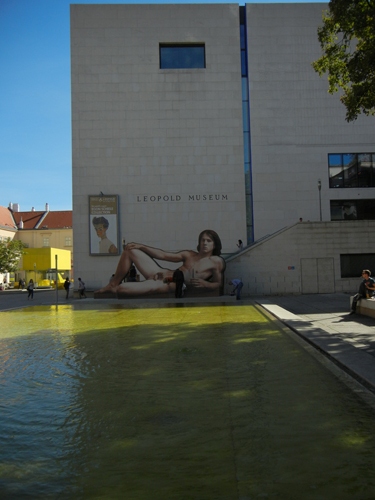 Leopold Museu, Wien
Leopold Museu, Wien
The Klimt paintings in Leopold were early works, in the realism tradition, though not without the keen psychological observation in its portraits.
 Gustav Klimt, Leopold Museum, Wien
Gustav Klimt, Leopold Museum, Wien
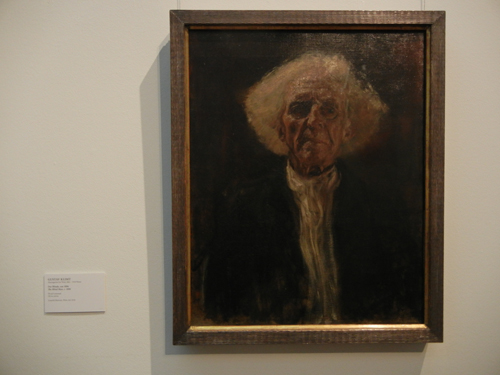 Gustav Klimt, Leopold Museum, Wien
Gustav Klimt, Leopold Museum, Wien
Leopold Museum did have one of his later works, a masterpiece,
Tod und Leben (Death and Life), which seemed combined the outlandish surface beauty of his own, and the depressing pessimism from his younger peer, Egon Schiele.
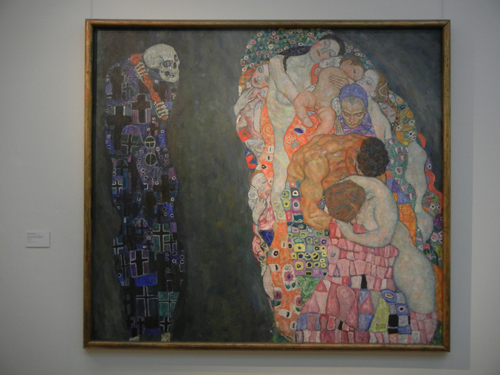 Tod und Leben, 1910, Gustav Klimt, Leopold Museum, Wien
Tod und Leben, 1910, Gustav Klimt, Leopold Museum, Wien
However, no one could outdo Egon Schiele in the province of unmitigable sadness and despair, demonstrated by his seemingly innocent landscapes and townscapes, seductive femme fatales, and the most wrenching group portraits. He became my new hero, who had an unflinching look at misery and death.
Speaking of death, a sad note was that both Klimt and Schiele died in 1918, of the great influenza after World War I. Death had never been far away from frivolity.
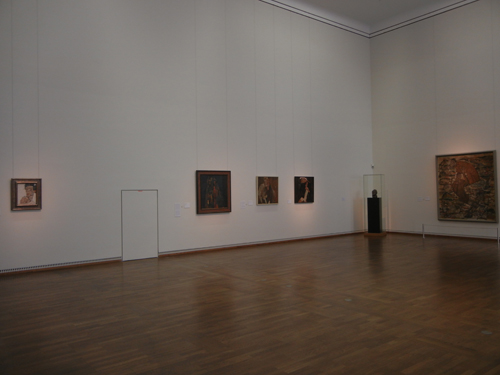 Leopold Museum, Wien
Leopold Museum, Wien
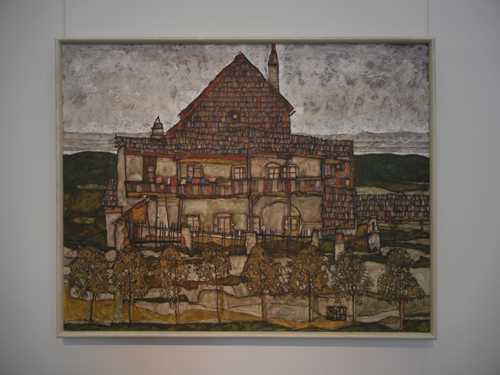 Egon Schiele, Leopold Museum, Wien
Egon Schiele, Leopold Museum, Wien
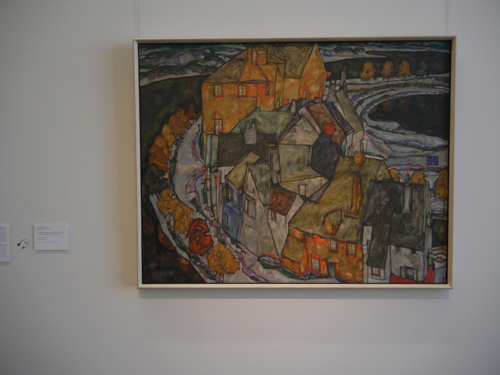 Der Häuserbogen II (,,Inselstadt''), 1915, Schiele, Leopold Museum
Der Häuserbogen II (,,Inselstadt''), 1915, Schiele, Leopold Museum
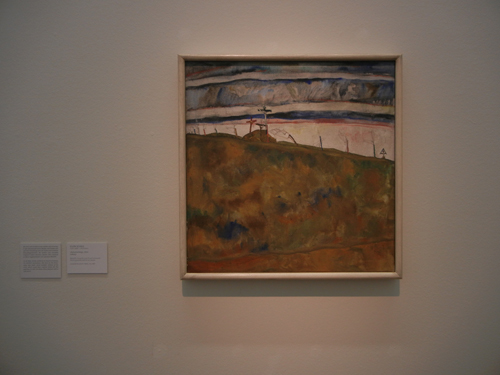 Kalvarienberg, 1912, Egon Schiele, Leopold Museum
Kalvarienberg, 1912, Egon Schiele, Leopold Museum
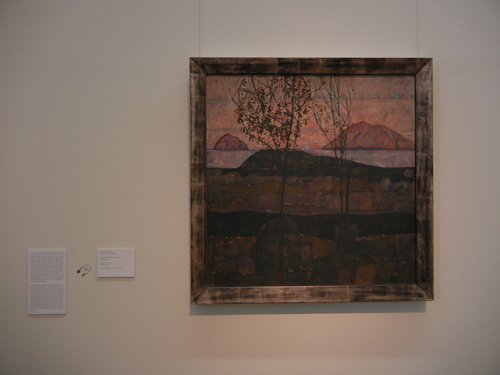 Versinkende Sonne, Egon Schiele, Leopold Museum
Versinkende Sonne, Egon Schiele, Leopold Museum
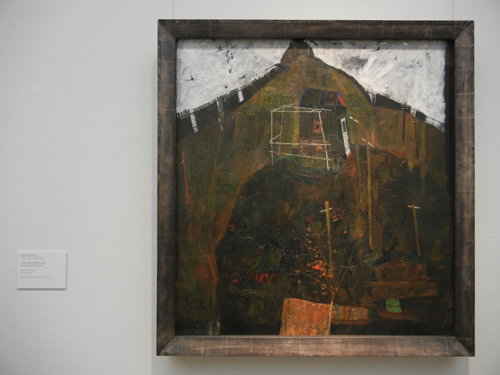 ,,Rabenlandschaft'', 1911, Schiele, Wien 1900, Leopold Museum
,,Rabenlandschaft'', 1911, Schiele, Wien 1900, Leopold Museum
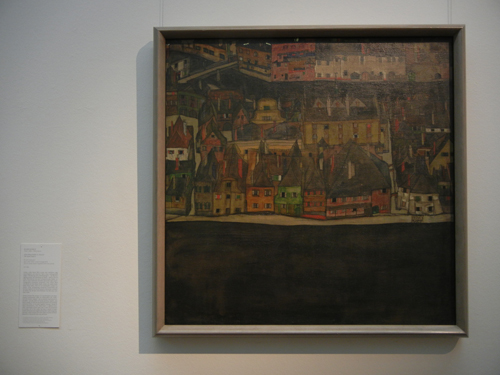 Die Kleine Stadt II, 1912-13, Schiele, Wien 1900, Leopold Museum
Die Kleine Stadt II, 1912-13, Schiele, Wien 1900, Leopold Museum
 Bildnis Wally Neuzil, 1912, Egon Schiele, Leopold Museum, Wien
Bildnis Wally Neuzil, 1912, Egon Schiele, Leopold Museum, Wien
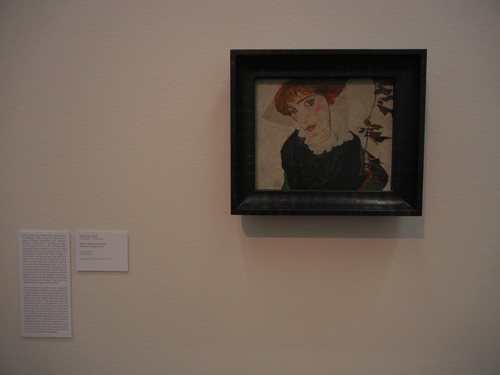 Bildnis Wally Neuzil, 1912, Egon Schiele, Leopold Museum, Wien
Bildnis Wally Neuzil, 1912, Egon Schiele, Leopold Museum, Wien
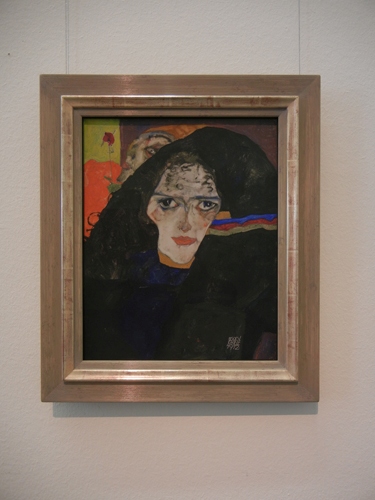 Trauernde Frau, 1912, Egon Schiele, Leopold Museum
Trauernde Frau, 1912, Egon Schiele, Leopold Museum
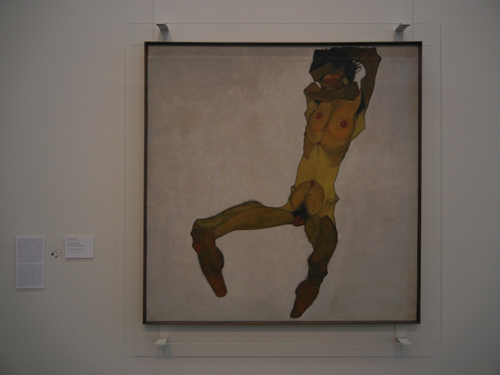 Sitzender Männerakt (Selbstdarstellung), 1910, Egon Schiele, Leopold Museum, Wien
Sitzender Männerakt (Selbstdarstellung), 1910, Egon Schiele, Leopold Museum, Wien
 ,,Die Eremiten'', 1912, Egon Schiele, Leopold Mueum, Wien
,,Die Eremiten'', 1912, Egon Schiele, Leopold Mueum, Wien
 Rückenansicht eines weiblichen Halbaktes mit Tuch (Fragment), 1913, Schiele
Rückenansicht eines weiblichen Halbaktes mit Tuch (Fragment), 1913, Schiele
 Rückenansicht eines weiblichen Halbaktes mit Tuch (Fragment) (details), 1913, Schiele
Rückenansicht eines weiblichen Halbaktes mit Tuch (Fragment) (details), 1913, Schiele
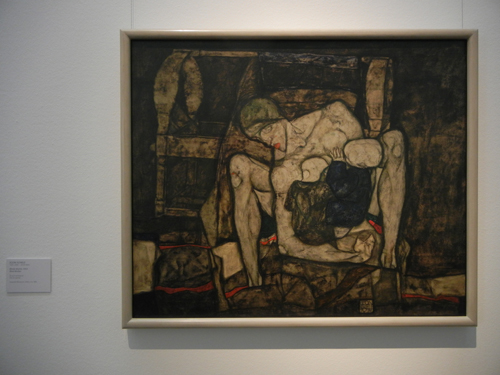 Blinde Mutter, 1914, Egon Schiele, Leopold Museum
Blinde Mutter, 1914, Egon Schiele, Leopold Museum
 Egon Schiele, Leopold Museum
Egon Schiele, Leopold Museum
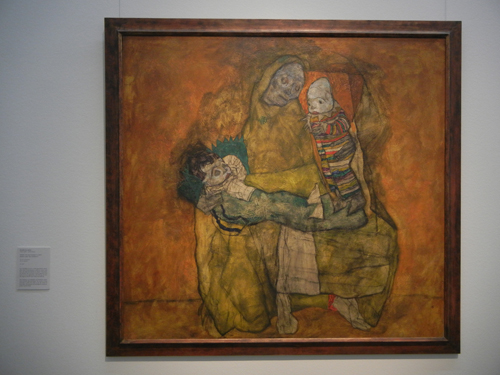 Mutter mit zwei Kindern II, 1915, Egon Schiele, Leopold Museum
Mutter mit zwei Kindern II, 1915, Egon Schiele, Leopold Museum
 Drei stehende Frauen (Fragment), 1918, Egon Schiele, Leopold Museum
Drei stehende Frauen (Fragment), 1918, Egon Schiele, Leopold Museum
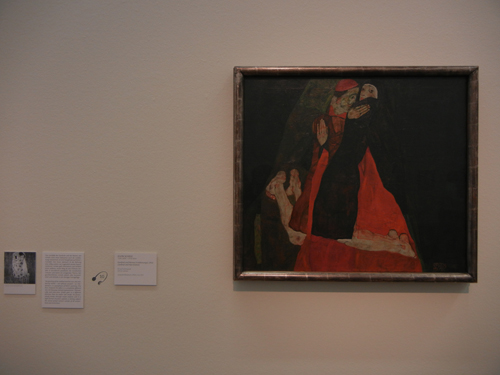 Kardinal und Nonne, Egon Schiele, Leopold Museum
Kardinal und Nonne, Egon Schiele, Leopold Museum
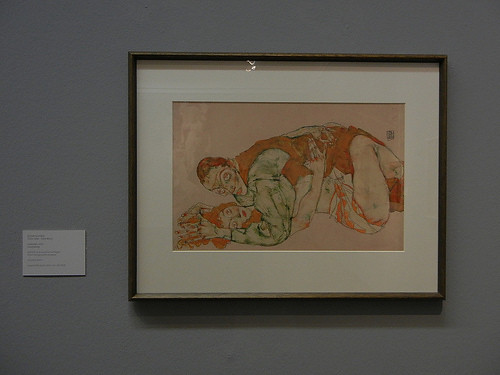 Liebssatt, 1915, Egon Schiele, Wien 1900, Leopold Museum
Liebssatt, 1915, Egon Schiele, Wien 1900, Leopold Museum
Related posts on
Art · 文化 · Kunst:
- Magnificent Churches in Vienna
-
Naked Audience for Naked Men Exhibit at Leopold Museum, Vienna
-
Angelic and Evil - Bunkerei and Palais Augarten in Augarten, Vienna
Label:
Austria,
Austria and Italy Trip 2012
 Yesterday, 30 December 2012, I returned to De Young Museum in San Francisco for The William S. Paley Collection: A Taste for Modernism, on the very last day of the exhibit, of which The De Young Museum website informed us was "A selection of major works from the William S. Paley Collection at the
Museum of Modern Art in New York.. A pioneering figure in the modern entertainment,
communication and news industries, Mr. Paley (1901–1990) was a founder
of the Columbia Broadcasting System (CBS), and a dedicated
philanthropist and patron of the arts. The Paley Collection, which
includes paintings, sculpture and drawings, ranges in date from the late
19th century through the early 1970s. Particularly strong in French
Post-Impressionism and Modernism, the collection includes multiple works
by Paul Cezanne, Henri Matisse and Pablo Picasso, as well as
significant works by Edgar Degas, Henri Toulouse-Lautrec, Paul Gauguin,
Andre Derain, Georges Rouault and artists of the Nabis School such as
Pierre Bonnard and Edouard Vuillard."
Yesterday, 30 December 2012, I returned to De Young Museum in San Francisco for The William S. Paley Collection: A Taste for Modernism, on the very last day of the exhibit, of which The De Young Museum website informed us was "A selection of major works from the William S. Paley Collection at the
Museum of Modern Art in New York.. A pioneering figure in the modern entertainment,
communication and news industries, Mr. Paley (1901–1990) was a founder
of the Columbia Broadcasting System (CBS), and a dedicated
philanthropist and patron of the arts. The Paley Collection, which
includes paintings, sculpture and drawings, ranges in date from the late
19th century through the early 1970s. Particularly strong in French
Post-Impressionism and Modernism, the collection includes multiple works
by Paul Cezanne, Henri Matisse and Pablo Picasso, as well as
significant works by Edgar Degas, Henri Toulouse-Lautrec, Paul Gauguin,
Andre Derain, Georges Rouault and artists of the Nabis School such as
Pierre Bonnard and Edouard Vuillard." 